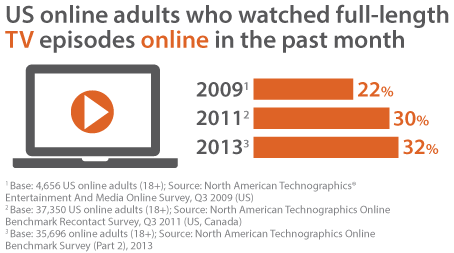The Data Digest: A New Wave Of Channel Surfers
with Anjali Lai
Summer 2013 may be bringing about a renewed enthusiasm for surfing — and not only on the beach: Many consumers are turning to online video services to skim the waves of new content.
In Q3 2012, Forrester’s Technographics Data Insight showed that around one in ten US online adults had canceled their TV service in order to stream content exclusively from the Internet; those who did not cancel their programming cited their desire to channel surf as the primary reason for maintaining TV service. However, as online video evolves, consumers are finding that the Internet enables an equivalent channel-surfing experience. Participants in our ConsumerVoices online community say they look to Netflix to discover new entertainment content rather than to simply stream a specific show:
“Every time I use Netflix, it is to discover what is on. I never go on there at certain times looking for specific shows. I like having all their movies and shows available to me when I want it.”
“Channel surfing” on websites like Netflix allows consumers to access an enormous amount of media content, including that which is exclusive to the Internet (and that is already making history). Amazon.com’s recent decision to begin producing original content worldwide reflects the industry’s desire to reach a growing online audience. Forrester’s Consumer Technographics® data shows the increase in online TV viewership over time:

With online media providers continuing to host consumers’ entertainment behaviors, the increasing potential of online video engagement is clear to marketers and investors alike. As early as 2011, my colleague James L. McQuivey recognized the disruptive power of sites like Netflix; today, marketers are still striving to embrace the digitally disrupted consumer experience. In his recent report, my colleague Jim Nail advises that when it comes to TV: “recent declines in live-viewing ratings have convinced the industry that it’s time to address new behaviors . . . Initial moves to shore up the existing mass-audience model will only temporarily hold back larger changes.” The recent merger of Publicis and Omnicom suggests that these larger changes are no longer out of sight but are just on the horizon. To navigate the seas of constant change, marketers need to take the old saying to heart: “You can’t stop the waves, but you can learn to surf.”